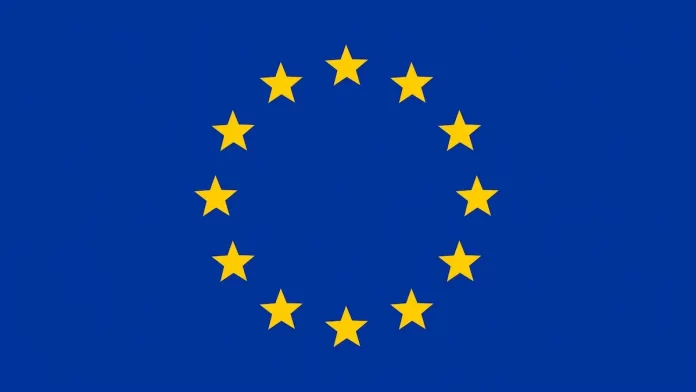In an increasingly interconnected world, the European Union (EU) has recognized the significance of a harmonized digital landscape to foster economic growth, innovation, and competitiveness.
The Digital Single Market (DSM) Strategy, launched in May 2015, is a comprehensive initiative aimed at breaking down barriers and facilitating seamless digital interactions across all EU member states.
This article delves into the main features of the EU’s Digital Single Market Strategy and its impact on various aspects of the digital economy.
Removing Barriers to Cross-Border E-Commerce
One of the primary objectives of the DSM Strategy is to eliminate barriers to cross-border e-commerce.
This entails addressing legal and regulatory obstacles that have hindered the smooth flow of online trade within the EU.
The strategy seeks to establish a more uniform and transparent legal framework for digital businesses, consumers, and online service providers.
Harmonizing Digital Copyright and Intellectual Property Laws
The DSM Strategy aims to modernize and harmonize digital copyright laws to ensure fair remuneration for creators and a thriving digital content market.
This includes measures to enhance cross-border access to digital content and tackle issues such as geoblocking, which restricts access to content based on the user’s location.
Data Protection and Privacy
Safeguarding personal data and privacy is a fundamental aspect of the DSM Strategy.
The General Data Protection Regulation (GDPR), introduced in May 2018, plays a crucial role in this regard by providing a single, unified data protection framework for businesses and citizens across the EU.
The GDPR ensures that data is handled responsibly and transparently, promoting trust in the digital marketplace.
Modernizing Digital Infrastructure
The DSM Strategy recognizes the importance of reliable and high-speed digital infrastructure to support the growth of the digital economy.
Initiatives such as the European Electronic Communications Code aim to foster investment in advanced networks and promote 5G deployment across the EU.
Boosting Innovation and Startups
To stimulate innovation and support startups, the DSM Strategy focuses on creating a conducive environment for digital entrepreneurs.
Measures include simplifying access to funding, promoting venture capital investments, and reducing administrative burdens for startups and small businesses.
Enhancing Cybersecurity
Given the increasing prevalence of cyber threats, the DSM Strategy emphasizes the need for strong cybersecurity measures to protect digital services and consumers.
The NIS Directive (Directive on Security of Network and Information Systems) is one of the key initiatives aiming to improve cybersecurity resilience across critical sectors.
Facilitating Digital Skills and Education
The DSM Strategy emphasizes the importance of equipping EU citizens with the necessary digital skills for the modern workforce.
Initiatives to promote digital literacy and provide training opportunities are crucial in preparing the EU workforce for the digital age.
E-Government and Public Services
The DSM Strategy seeks to enhance e-government services, making them more user-friendly and accessible to citizens and businesses.
The goal is to streamline public services and create a more efficient and digitalized public administration.
Similar Initiatives all over the World
While the European Union’s Digital Single Market Strategy stands out as a pioneering effort to create a unified digital economy within its member states, similar initiatives have been undertaken by other regions and countries across the world.
In the United States, for instance, the National Broadband Plan, launched in 2010, aimed to expand broadband access, stimulate economic growth, and promote digital inclusion. Additionally, the United States-Mexico-Canada Agreement (USMCA), signed in 2020, includes provisions for enhancing digital trade and cross-border data flows.
In the Asia-Pacific region, the Association of Southeast Asian Nations (ASEAN) has been working towards an ASEAN Digital Integration Framework to boost digital connectivity and foster a digital ecosystem within the member states.
Moreover, individual countries like Singapore have rolled out comprehensive strategies, such as the “Smart Nation” initiative, to leverage digital technologies and data analytics for societal and economic advancements.
In China, the “Made in China 2025” plan aims to transform the country into a global leader in innovation and technology. This plan emphasizes the development of emerging technologies like artificial intelligence, robotics, and biotechnology to drive economic growth and digital transformation.
Similarly, countries in the Middle East and Africa have been embracing digital transformation with initiatives like “Smart Dubai” and “Digital India,” which seek to create smart cities and foster digital inclusion respectively.
Conclusion
The Digital Single Market Strategy of the European Union represents a comprehensive and forward-looking approach to harnessing the full potential of the digital economy.
By eliminating barriers, harmonizing regulations, and investing in digital infrastructure and skills, the EU aims to create a vibrant and innovative digital marketplace that benefits citizens, businesses, and economies across the region.
As the digital landscape continues to evolve, the DSM Strategy remains a crucial tool in navigating the challenges and opportunities presented by the digital age.
